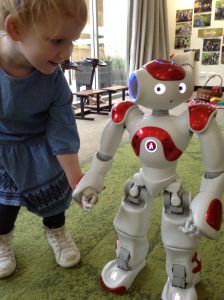In this edition
Introducing Ada…
On the first day of September we welcomed Ada into our learning community. We thank our parent committee, Friends of the ELC, for supporting our dream and strongly advocating for the purchase of a NAO Humanoid Robot for the Early Learners’ Centre. The children have welcomed Ada into their playrooms and have displayed innate curiosity and wonder towards their new friend. The children have begun sharing their questions, wonderings and theories and these are being documented by the educators.
The children’s interactions with Ada have highlighted their empathy and compassion for others as they have begun to question and share their concerns about her sleeping arrangements, being alone and what to do when she falls over. They are also eager to further develop their understanding and learn more about her features and functions. It’s interesting to see the children share their theories about what her features are for and how they are used successfully and they are beginning to recognise their responsibilities to Ada and appreciate their connection to her.
The sessions with Ada are challenging the thinking and understandings of the educators as the children begin to think and pose questions and provocations for further inquiry. The educators have maximised these learning opportunities and have effectively used Ada as a social connector, engaging numerous participants, sharing ideas, theories and perspectives. Children have begun challenging the ideas of others and further developing their understandings.
Each week I have the absolute privilege to be included in a meeting with Kate, Sarah Croston Melling and Ms Melissa Bray the schools eLearning Integrator. We engage in rich dialogue about the children’s experiences and together we analyse data and synthesise pathways for further discovery. Ms Bray challenges the thinking of the children and educators and encourages us to be brave and creative in our approach. In our last session, she conceptualised our work with Ada as finding humanity through technology, as the children develop empathy/emotional intelligence, identity, social cues, leadership and build connections through their inquiries. She has developed the image below to support educators, children and families to associate this language in learning with Ada from the beginning ensuring the pathway is clear and successful.
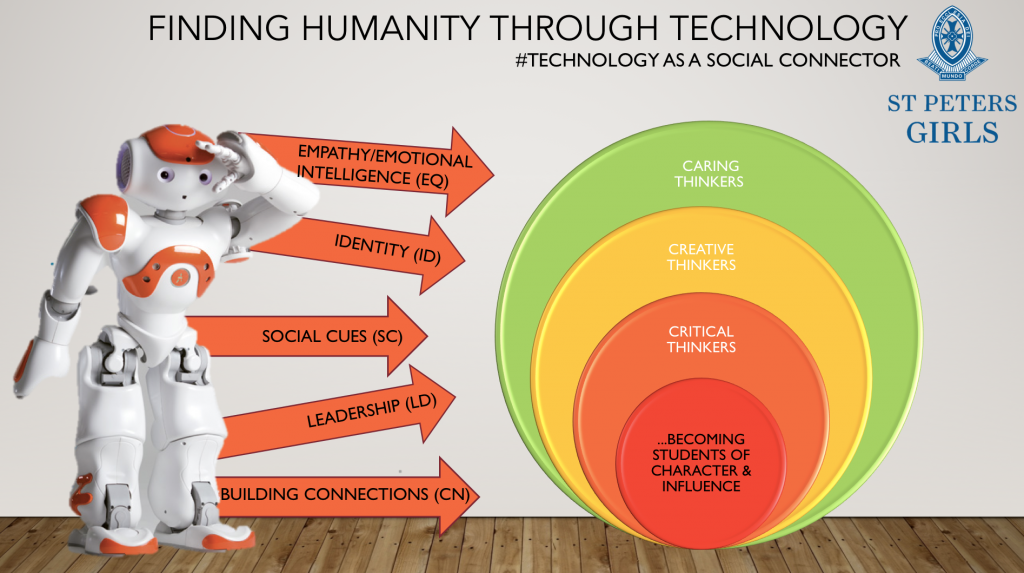
As the children are developing their questions and theories so are their families. We would like to invite you to share with us the conversations that you are having with your children about Ada and any questions that you may have that may deepen our inquiries. Please contact either myself kporplycia@stpetersgirls.sa.edu.au, Kate Mount, kmount@stpetersgirls.sa.edu or your child’s class teacher with your questions.
Kind regards,
Kirsty Porplycia
ELC Educator
Why the name Ada?
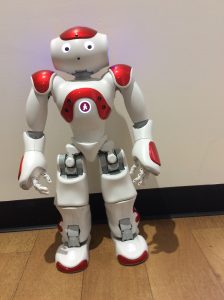
The name Ada was selected by both the ELC staff and the Friends of ELC. Independently we all set off to find a suitable name and discovered that Ada Lovelace (born in 1816) was the first coder. She developed a passion for mathematics and analytical thinking. This led her to explore how technology could be a collaborative tool. Ada developed a code that she described as an algorithm tailored for implementation on a computer hence she is known as the first computer programmer.
We could not believe our luck to discover and learn about Ada Lovelace and imagined all those years ago a female scientist and mathematician developed such early coding. We were also thrilled to read about technology being a collaborative tool!
Notification of Illness
Parents are requested to advise the ELC of any illness and/or reason for absence that your child may have. This is extremely important. We have reflected on our recent illness across the centre and believe we could have provided earlier information to families if we had been notified immediately of children who had been unwell. This is outlined in our Illness Policy requesting notification.
To assist us we are now providing the option for families to contact the ELC by either ringing us directly or by sending an email to their teacher. To improve the consistency of this process we are requesting that families utilise the service offered by our Front Office for School students. Lesley and Sarah in the Front Office manage student absentees, it would be appreciated if you could you please notify them of a late arrival/absence, using one of the following methods:
Test message: 0428 601 957
Email: attendance@stpetersgirls.sa.edu.au.
When sending to either of the above methods, please include your child’s name, the ELC room and reason for absence (illness detail). It would be preferable it this was completed by 9.30am.
We know from experience that school families find the text method very convenient as they can place this number directly in their phone.
Much appreciated,
Kate Mount
Happy Moon Festival
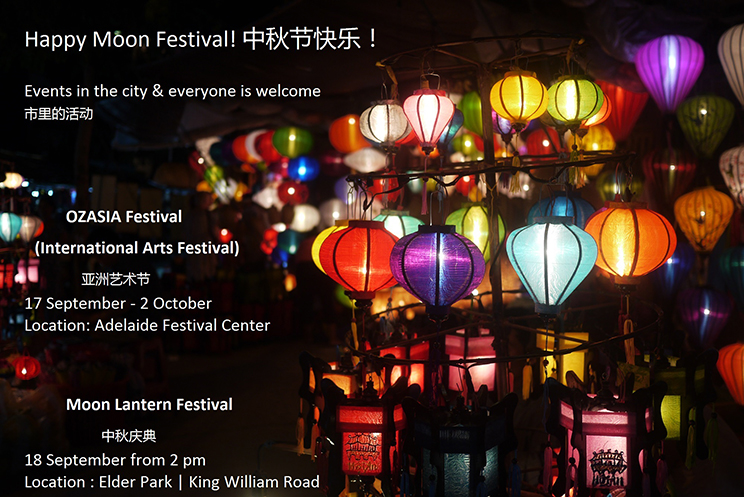
News from the Stonyfell Room
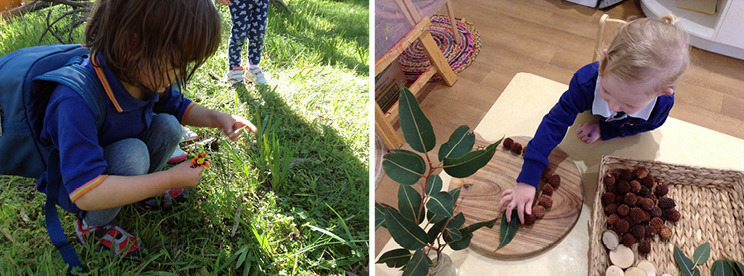
In the Company of Beauty- Reflection on the Right to Beauty
“The task of teaching cannot forget beauty.” Vea Vecchi
At ELC we have a culture of being lifelong learners. We believe in maintaining a continual high level of professional development. Last Saturday, I had the privilege of attending a Reggio inspired session entitled ‘In the Company of Beauty’.
This session unpacked parent’s perspectives on beauty in Australian early childhood environments. This session was run by David Gilkes, a passionate and highly regarded teacher from Tasmania. He shared what he has learnt about parent perspectives on beauty in Australian early childhood settings.
David is a strong advocate for the roll that beauty plays in any setting and that beauty can mean many things as it is subjective and personal. David defined beauty as being three main things:
- A need and a right
- A connector
- Joy and wonder.
Every aspect of his presentation lead back to these three beliefs.
This session was such a provocation for me, I had many of my own personal beliefs affirmed. Expressing beauty and exploring the right to beauty is a passion of mine. I hope many of you have observed this as I have a strong belief in creating an aesthetically beautiful environment for your children to be immersed in. The Stonyfell Room holds this beauty!
“The space has to be a sort of aquarium that mirrors the ideas, values, attitudes and cultures of the people who live within it.” Loris Malaguzzi
I work extremely hard at creating a stimulating and beautiful environment, as I believe that children have the right to be exposed to beauty in many different ways. Every area of the space has been carefully considered and put together with love. I hope in return that the love and care can be felt through the experiences.
Beauty however is not just about aesthetics, beauty can be in a relationship, a connection or a moment. Beauty can be a feeling; it can be shown through empathy and understanding. I believe that we are creating beauty in the Stonyfell Room and that being exposed to beauty and beautiful spaces allows us to reciprocate that beauty in our lives.
“A space should quietly whisper beauty is all around you. Together we should take the time to explore.” Thornton and Brunton
Laura Reiters
ELC Educator
News from the Bell Yett Room
As the ELC community reached our fundraising goal and were able to purchase our own Nao Humanoid Robot, we shared the news in the Bell Yett Room via our digital screen. The children wondered why this robot was featured as we excitedly shared the news with them.
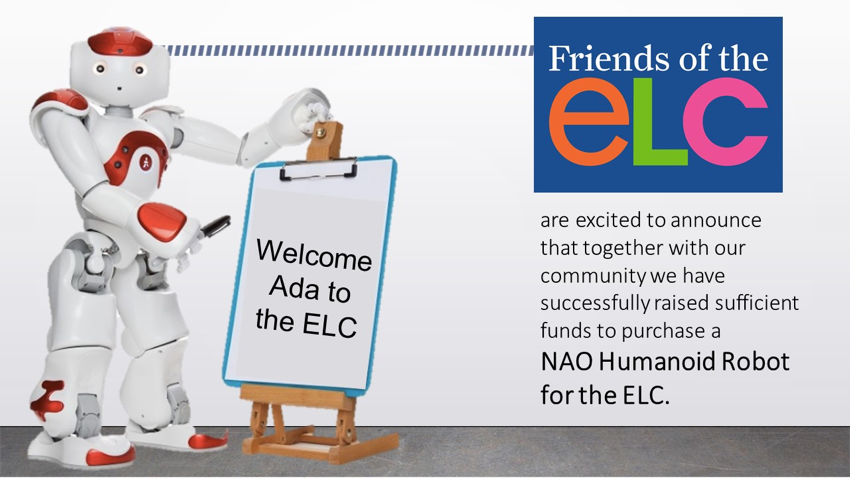
“Is it robot day yet?” became a common question as the children eagerly anticipated its arrival.
As the children first met Ada, they were not only filled with joy and wonder but they quickly began questioning and developing their own theories and ideas:
“Will the robot catch a ball?”
“Will he eat lunch?”
“I wonder if he will have a bag.”
“You need to charge her.”
“The robot was waving at me.”
“They might be twins.”
“Why does she have red on her?”
“You press her button and then she can work.”

The children in the Bell Yett room have already had opportunities to meet Ada and her impact is already influencing our learning program. As we have been investigating recycling and exploring different ways of reusing materials, we have been amazed as the children are regularly coming up with the idea of making our own Ada with a variety of different materials and in a variety of different forms, including 3D sculpture and collage. We have even been able to introduce Ada to our own Recycle Robot!
As the children are developing a relationship with Ada, they are naturally connecting her to our learning experiences, enabling deeper and more meaningful engagement. We can’t wait to see where Ada and the children lead us next!
Leanne Williams and Nell Tierney
News from the Ferguson Room

After the initial introduction of our new robot Ada last week, the Ferguson children have started to share their wonderings and theories about her. After some discussion this is where the children’s interest lie:
“What colour was Thomas?”
“Blue. Ada is red because she is a girl”
“Does Ada have batteries?”
“Where is her bed?”
“Why can’t the robot have some water?”
“What does the purple button do?”
“Would you like to hold my hand?”
Throughout the term our numeracy focus has been on transformation and location. As part of this focus we have been programming the Beebot’s to move across the floor, under tunnels, through legs and around chairs. Watching children at this age explore the foundations of computational thinking has been exciting to see. Once we asserted that the Beebot could only be moved through programming (it was too tempting at first to pick them up and move them) the children engaged their problem-solving skills with one another to determine its movements. It has been an exciting time for the room, made exceptionally more profound when one of the children realised:
“We have to program Ada the robot like we program the Beebot’s”.
Now that we are fortunate to have our own robot in the centre it provides the opportunity for our children to connect the coding between the Beebot’s and potentially Ada.
During the week, Ada came to visit us in the Ferguson Room and it was fascinating to see the children’s engagement with her. We looked at some of the wonderings and theories we had begun thinking about before we met her again. For the moment, we are ensuring that we give time and place to focus on the children developing a relationship with Ada through interactions, touch and questioning.
We are excited to be part of such a dynamic area of learning and look forward to sharing more news with you all soon.
Pam Foden
ELC Educator
News from the Hallett Room
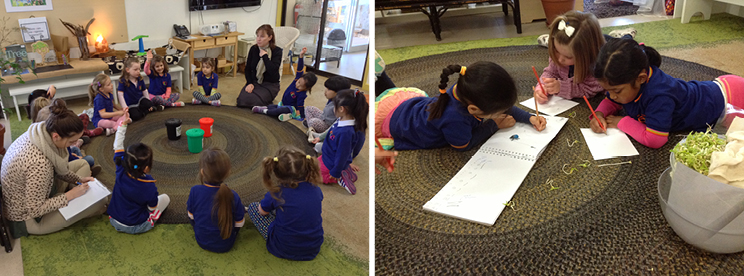
The Hallett Room children never fail to surprise me and this term is no exception. I have seen the children develop a deep respect and empathy for the environment as they gain an understanding of the connection they have to the planet. The educators have been encouraging the children to share their knowledge with each other and to research to find out more. You may have had your child taking an interest in the bins at home and asking you what goes in them. We have shared stories about the impact of waste on the environment and animals, so your child may be showing more concern when they see rubbish on the ground. This leads us to our third Line of Inquiry, ‘taking action to look after the planet’.
Valencia, “Some girls in Reception and Year 1 left some rubbish near the slide in the Junior School playground and I put it in the bin.”
Isabelle, “Our actions could make the planet happy.”
Ava, “If we break the planet we won’t be able to live on the planet and the plants will die, that’s not fair.”
Matilda Purvis, “If you leave rubbish in the park a baby animal could eat it.”
Faith, “On my way to ELC I saw some rubbish and I told my Mummy.”
We have spent a lot of time this term gardening and looking after plants. We have also been growing and caring for mung bean sprouts. This has helped the children to see the positive impact their actions can have on the planet. Our adventures in Ferguson Park have built on the children’s understanding that we are not the only ones to use the space and if we take something out of the park we may be impacting on the animals that live there. The children are beginning to notice that their actions can impact on the planet (key concept: causation). This has been motivating for the children to begin to take action. If your child is taking action at home to look after their planet, we would love to hear the story. Please feel free to stop us to chat or email with any changes you have noticed.
Sarah Croston-Melling
Magic Moment
